How to Make Perfectly Matched Ear Wires
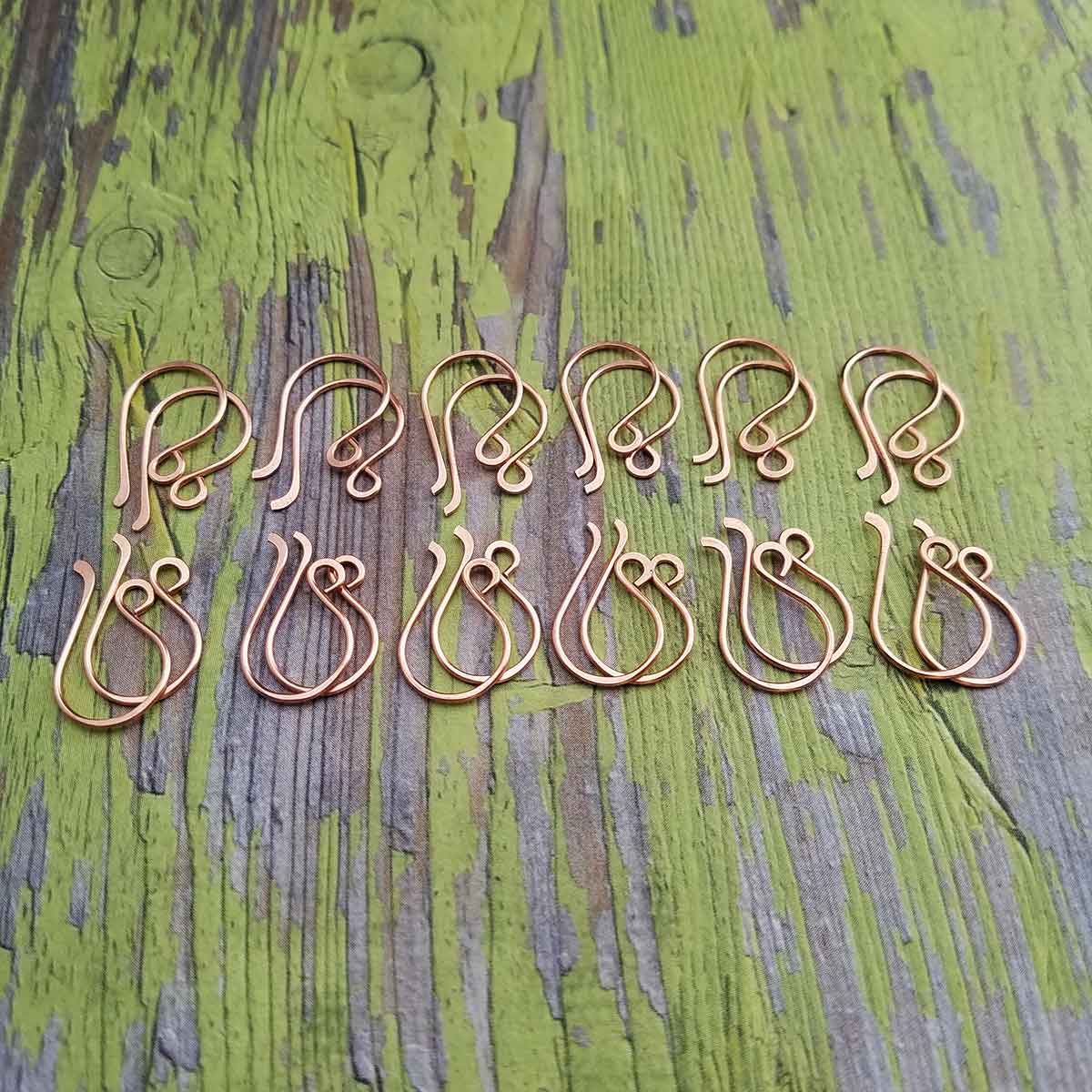
I’m a big believer in handcrafted jewelry findings. Much like jewelry adds the perfect final touch to any outfit, the findings that you choose to finish off your handcrafted jewelry add the perfect final touch to your work. So, allow me to show you how you can elevate your handmade earrings with perfectly matched ear wires that you can make quickly from scratch.
Truly, it breaks my heart whenever I see a beautifully wire woven pendant strung on a cheap rubber cord. Or when I see a pair of exquisite wire woven earrings hung on ugly ear wires that were manufactured by the thousands in China. I can’t help but wonder what that artist was thinking when she chose to present her work that
It’s like she gave up and decided that her work (or even worse, her customer!) wasn’t worth the few minutes that it takes to make beautifully handcrafted findings using the same wire that she used to create those earrings or that pendant.
Please don’t be that artist. Your work and your customers deserve better!
Copyright & Disclosure
You’re welcome to make and sell products from this tutorial. These ear wires are a common design that’s been around for eons, so I claim no exclusive rights to the design itself.
When it comes to my written tutorials, however, I do reserve exclusive rights to all images and written content. You may not reproduce or redistribute any portion of the Perfectly Matched Ear Wires tutorial in any way, shape, or form.
This copyright applies to the printable PDF version of the Perfectly Matched Ear Wire tutorial as well, and it’s included therein. You may share the free version of this tutorial only by linking directly to this page.
This post may contain affiliate links. If you click on a link and then make a purchase, I may earn a small commission (at no cost to you). As an Amazon Associate I earn from qualifying purchases. To learn more, please see my full disclaimer.
ear wire tutorial bundle
Buy now and save 25%!
Get five full-color ad-free PDF tutorials for all of the ear wires pictured here. This bundle normally sells for $20 in my Etsy shop, but you can get it today for $15. Just click the button below to have all five printable tutorials delivered straight to your inbox.
Getting Started
In her first book, Fine Art Wire Weaving, Sarah Thompson says, “Making your own findings adds a personal touch to your finished jewelry; it shows that you have thought about every detail.”
I couldn’t agree more. I also highly recommend that book, by the way. And if you want to turn your wire weaving hobby into a business, one way to set yourself apart from the competition is to make your own jewelry findings. Because, believe me, not everyone out there thinks about every detail of their presentation.
In this wirework basics tutorial, I’m going to show you how to make perfectly matched ear wires, every time. I make these matched pairs of ear wires by the dozen, so I always have handcrafted ear wires on hand. They’re so quick, easy, and affordable to make that I really can’t justify buying commercial ear wires.
The one exception that I make is for earrings that have a lot of movement, such as my Chalice Earrings. In those instances, I do choose to purchase sturdy and secure lever back ear wires. But for lightweight everyday earrings, I either integrate the ear wire directly into my design. As with my Easy Wire Earrings or my popular Twig Earrings. Or I use the super simple French Hook-style ear wires that we’re about to create together.
Skill Level: Beginner
This is a very basic wirework project that can be achieved by someone with little to no experience working with wire.
Choosing the Right Wire for Your Earring Findings
For best results, use half-hard or dead soft solid copper or sterling silver wire. If you choose to use a filled wire, be advised that these ear wires are finished and hardened by hammering the wire. Even light hammering can expose the base metal core in filled wires, which can negatively affect your final finish. I don’t recommend plated or anodized craft wire for these earrings. Those coatings will be ruined with this construction process.

Tools & Materials
- 20ga half-hard wire – 4 inches (10 cm) per pair
- Wire Cutters
- Flat Nose Pliers
- Stepped Bail-Making Pliers
- Needle File
- Nylon Mallet or Rawhide Mallet
- Chasing Hammer (optional)
- Bench Block
- Ruler
- Fine Point Permanent Marker
- Cup Burr Tool (optional)
- Sunshine® polishing cloths (optional)
Finished Size
These ear wires are about 3/4-inch long and 1/2-inch wide. However, you can easily change the length to suit your personal taste. Simple change the cut length of the wire.
20g wire is my preference for pierced ear wires. It’s the only gauge I use for ear wires unless someone specifically asks for a smaller or larger gauge. Commercial ear wires typically range between 18g and 22g. So, 20g is a comfortable size for pretty much everyone with pierced ears.
Let’s Make Some Perfectly Matched Ear Wires
If you prefer video tutorials, you can watch the video version below. Otherwise, keep reading for the written tutorial.
the latest on youtube:
The instructions for these ear wires are written for the 3/4-inch ear wires shown in the main image. However, you can easily extend the length of your hooks by simply increasing the length of the wire cut in Step 1. Some people prefer longer hooks. I personally prefer a shorter hook because they grip well and fit comfortably on my chubby ear lobes without getting caught in my hair.
Also, be sure to check out the Variations section below for ideas for different ear wires styles. I’ve included a few popular ear wire shapes. And all of them were created using this same technique.
Step 1
Straighten a length of 20ga wire by running it between your fingers or the jaws of your Nylon jaw pliers a few times. Once the wire is straight, measure and cut one 4-inch piece of 20ga wire.
Use your fine-point permanent marker to mark the center point of your wire.
Step 2
The key to making matched sets of ear wires is to create both wires at the same time, and that’s exactly what we’re going to do here.
Use your flat nose pliers to form a sharp 90-degree bend at the center mark of your 3-inch wire. Then fold the wire in half by gradually tightening the bend until the two ends of your wire are parallel.
Step 3
Tighten the fold by squeezing it firmly with the tips of your flat nose pliers, as shown.
Step 4
Check the cut ends of your wire to make sure they’re even. If not, trim the wire so that both ends are the same length, as shown.
Step 5
Using the 2mm step (the smallest step) on your stepped bail-making pliers, grasp the very tips of the wire firmly with your pliers and press the wire firmly against the mandrel with your thumb.
Step 6
Roll the wire around the mandrel until the cut ends of the wire touch the straight length of the wire, as shown.
You just created a small simple loop for each of the two ear wires. This is the loop that will attach to your earring dangle.
Step 7
Now center the wires on the 9mm step (the largest step) on your bail-making pliers.
Position the wires so that the small loops you made in Step 6 are resting against the 8mm step (the second to largest step), as shown.
Step 8
Press the straight lengths of the wire firmly against the mandrel with your thumb and roll the wire as far around the 9mm mandrel as you can go.
The folded part of the wire should end up resting against the simple loops that you made in Step 6.
Step 9
Position the folded end of the wire at the center of the 3mm step (the second step) on your bail-making pliers.
Grasp the tip of the fold with your pliers and press the wire firmly against the mandrel with your thumb.
Step 10
Roll the wire one third to halfway around the mandrel. Make sure this bend flows in the opposite direction of the large ear hook you made in Step 8, as shown.
Step 11
Use your wire cutters to trim the folded end of the wire. This will separate the two pieces and leave you with two identical ear wires.
Step 12
Use your needle file or a cup burr (optional) to smooth the cut ends of the wires and soften the edges.
The goal here is to make sure there are no sharp edges on the ear wires. Because that will make the earrings uncomfortable to put on and take off.
Step 13
Now we need to work harden the ear wires, so they’ll retain their shape. I like to flatten just the tops and bottoms of my ear wires. I think it gives them more of a hand-forged look. If you prefer your wires to remain round, skip this step and go on to Step 14.
Use your chasing hammer and bench block to lightly flatten the ear wires. But don’t use too much force or the wire will spread too much, which could make the wires uncomfortable to wear.
Step 14
Once you’re satisfied with your wires, use a soft mallet and your bench block to further harden the wire.
Tap lightly and evenly on the wires several times. Then check to see how sturdy your wires are by giving them the slightest twist. If the wire bends easily, harden it some more. Continue tapping and checking until the ear wires are noticeably stiff and springy.
It’s not easy to make copper or sterling silver ear wires as hard as the nickel or steel used for commercially manufactured ear wires. But being able to make wires that match your jewelry perfectly is totally worth the effort. With proper care, these wires will last a lifetime. They also look better and cost significantly less than commercially manufactured ear wires.
Again, I do prefer the security of lever back ear wires for heavier earrings that have a lot of movement. But when it comes to lightweight designs like my adorable Tassel Earrings, I always prefer to make my own ear wires.
Perfectly Matched Ear Wires Variations
This method of making matched pairs of ear wires can be easily adapted to almost any shape and style. Below are just a few examples of some popular ear wire silhouettes you can make.
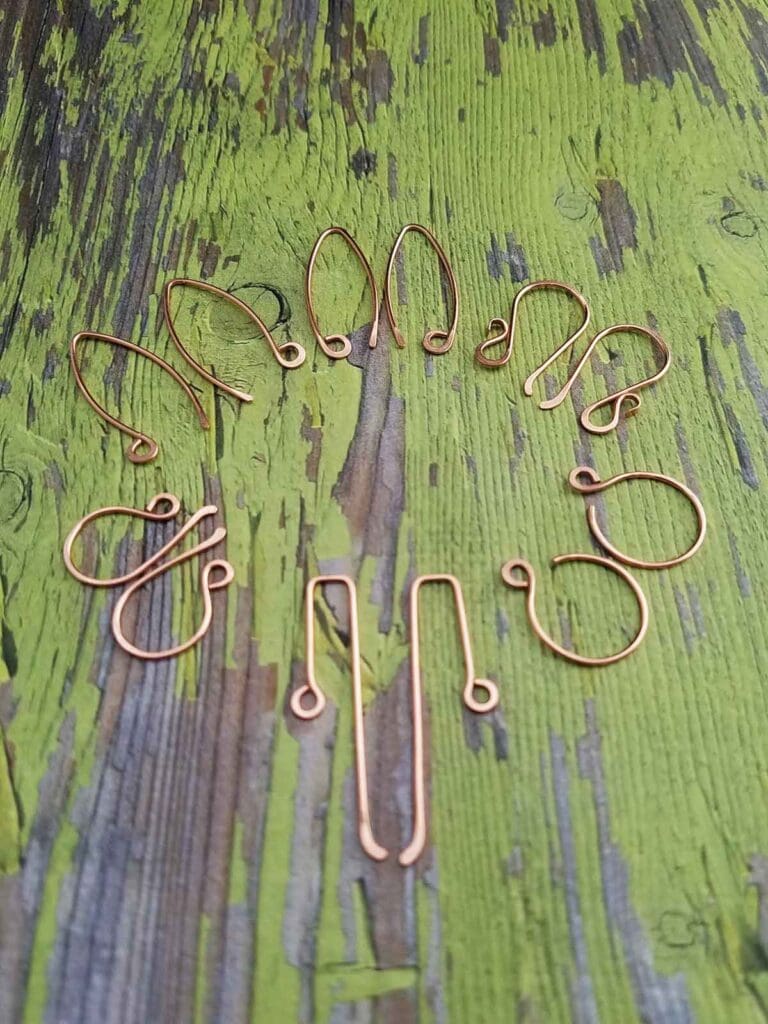
Get the bundle and save!
Get all 5 of my most popular ear wire tutorials
Grab my popular ear wire tutorial bundle today and save 25% off the normal price of $20 in my Etsy shop. This bundle, which will be delivered straight to your inbox, includes detailed full-color printable tutorials for all five of the ear wire shapes you see pictured here.
Or, check out the free condensed ear wire tutorials below (the printable tutorials contain more details, tips and tricks)
related posts
More FREE Ear Wire Tutorials
Experiment with this method. See if you can come up with an ear wire design that is uniquely your own. As with my Easy Infinity Clasp, it’s often those extra personal touches that ultimately become your signature. That unique little detail that clearly sets your work apart from the competition.
Finishing Suggestions
I patina all of my copper and silver jewelry with Liver of Sulfur (LOS), and then I burnish the patinated pieces with super fine steel wool (Grade #0000) in a warm bath of water and original Blue Dawn dish soap. The steel wool brings back the bright copper highlights on the high spots.
Once that’s done, I rinse the jewelry thoroughly to remove any particles of steel wool. Then I put the jewelry in a tumbler barrel filled with warm water and a generous squirt of Blue Dawn. I tumble all of my finished jewelry for a minimum of two hours.
There’s a lot of debate about whether tumbling will work harden wire. My experience is that you can achieve some hardening, but only by tumbling for extended periods of time. So, two hours on the tumbler won’t make a noticeable difference. Twenty-four hours of tumbling does seem to noticeably increase hardness, however.
I never recommend tumbling wire jewelry with beads or gemstones for extended periods. However, there’s no risk in tumbling plain wire findings for several hours. Tumblers are designed to run for days at a time because that’s how long it takes to polish rough stones. So, if you don’t mind listening to the rustle of a tumbler for a full day, give it a try. And let me know if your ear wires came out of the tumbler noticeably harder than when they went in.
If you’re new to wirework, read this detailed tutorial that walks you through my 7-step patina process. And if you’re wondering why I recommend tumble polishing specifically, check out this post. Also, be sure to clean your steel shot regularly. Because clean shot gives you the best possible final finish on your jewelry.
Pin This Post for Later

Thank You!
Thanks so much for joining me today. I hope you enjoyed creating your own Perfectly Matched Ear Wires from scratch. If you’d like a printable PDF version of this tutorial, you can find it here.
Also, be sure to favorite my Etsy shop for the latest ad-free printable PDF tutorials. As always, I’d love to see what you’ve made and hear your ideas and suggestions for new tutorials and blog posts. So, be sure to connect with me @door44studios on Pinterest, Instagram, and Facebook.
Until next time, go make something beautiful!



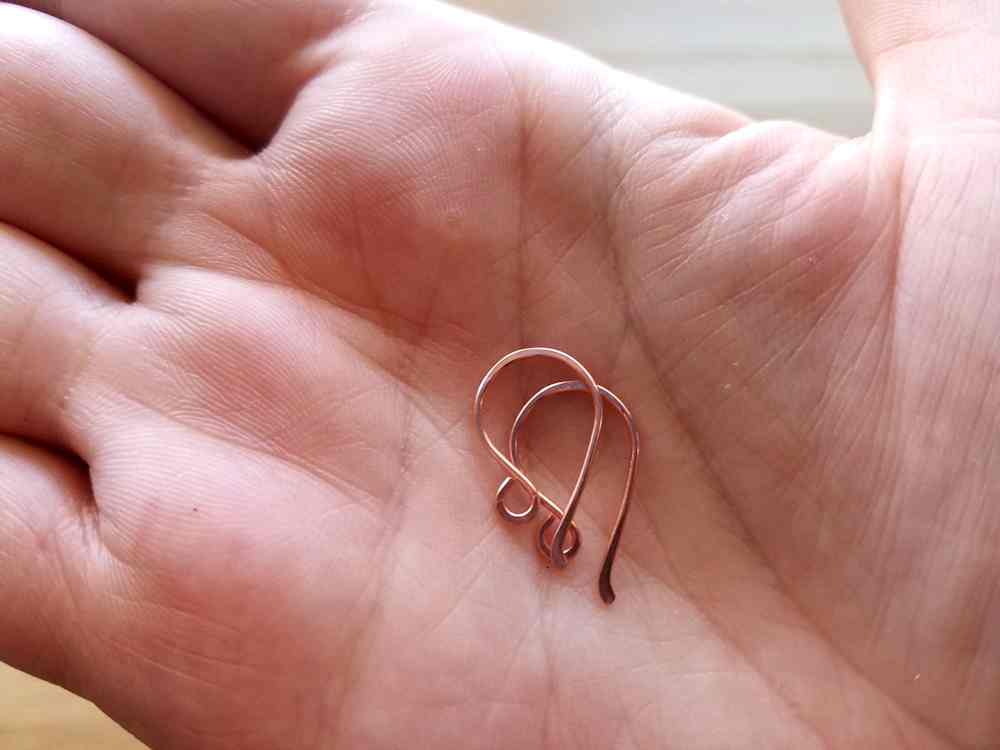
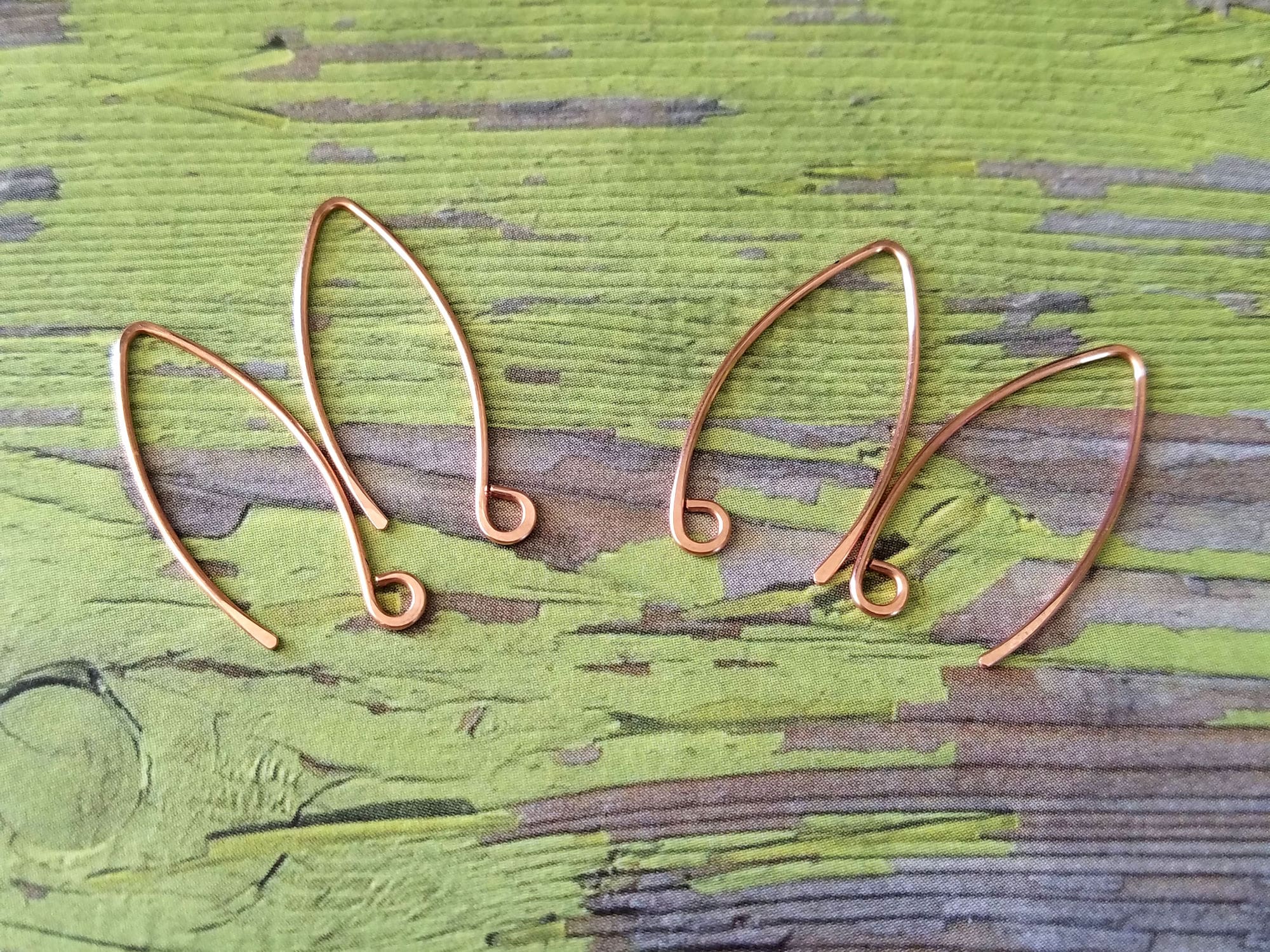

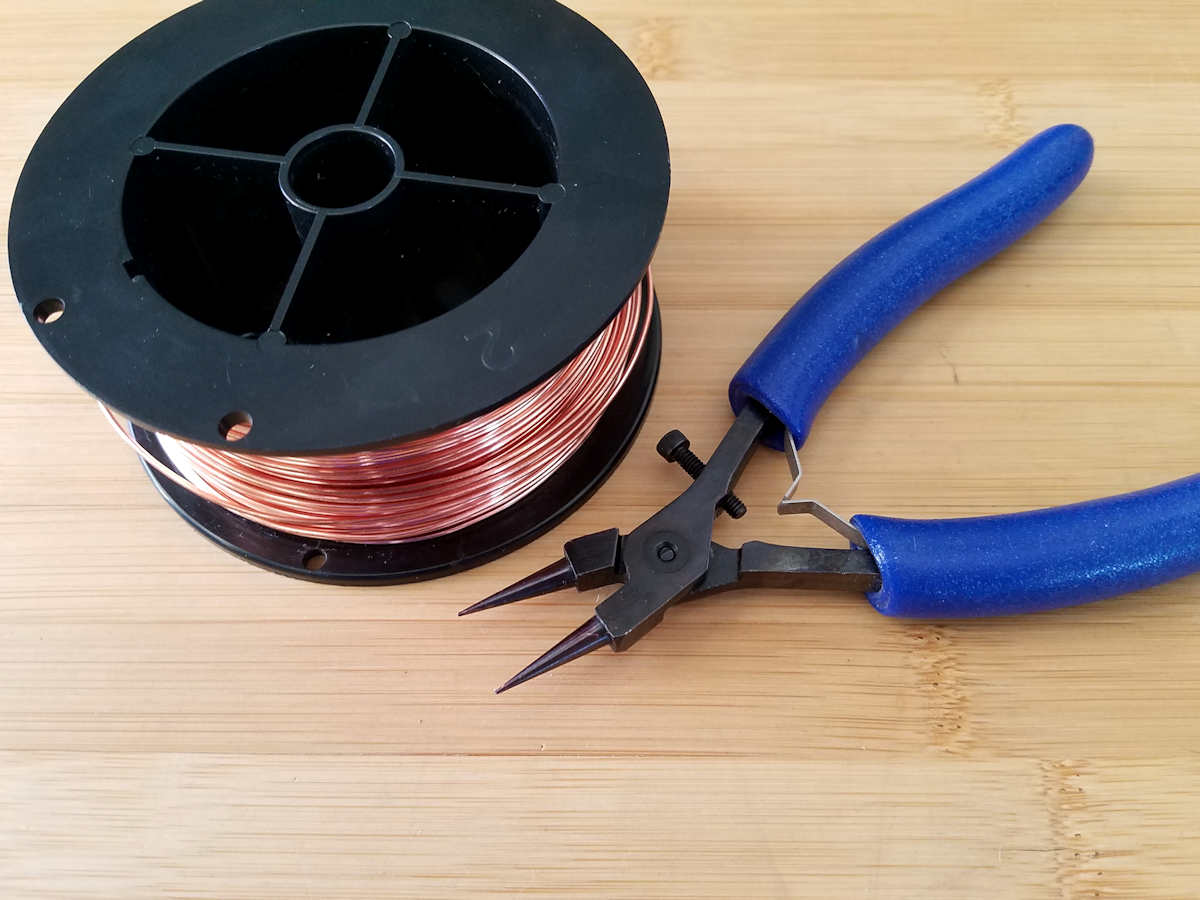
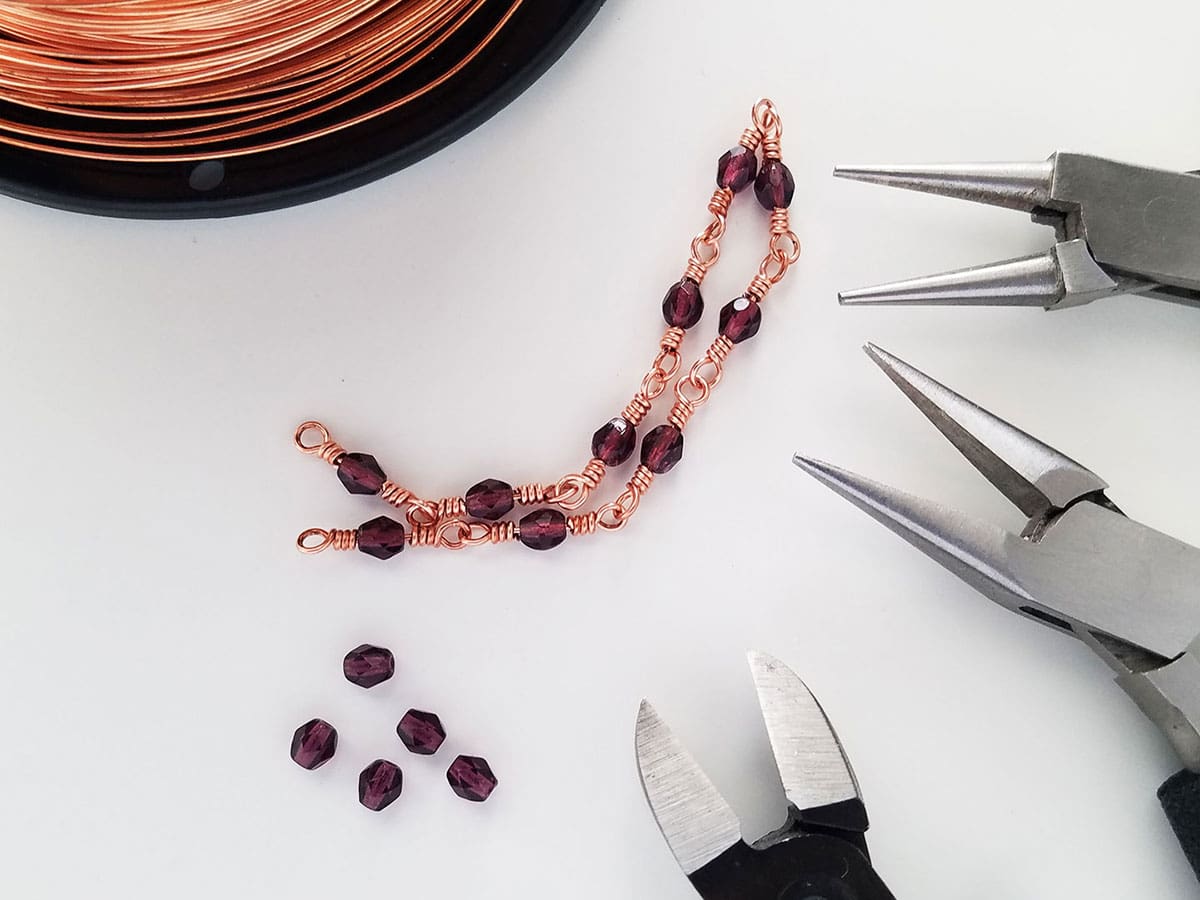
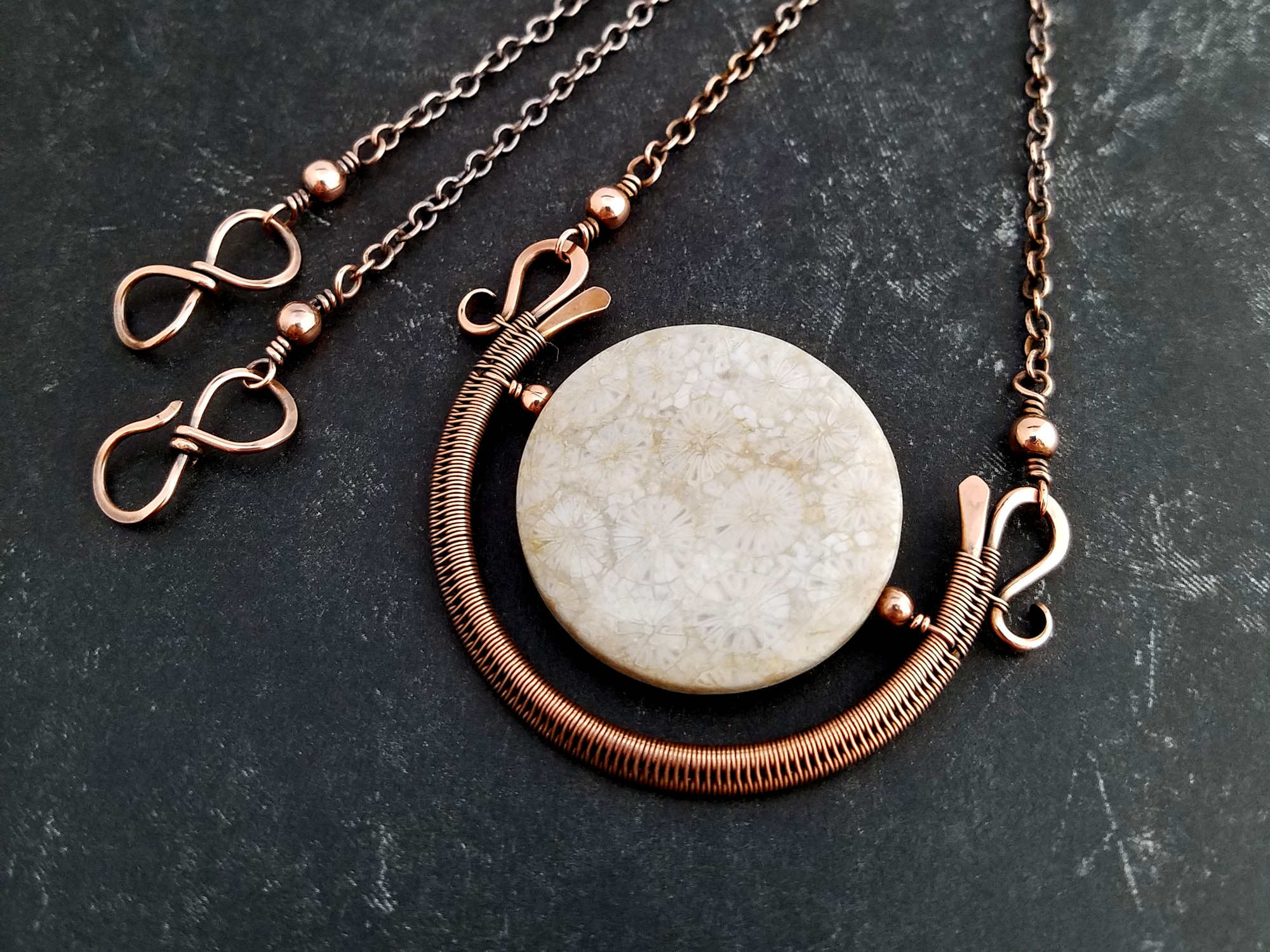

I saw you video on YouTube today about using the torch. I have been a little scared to try one. Now that I have seen your video I am feeling better about it. If I could give you 10 thumbs up I would thank you. Pauline
I’m so glad my video helped you get over your fear of using a torch, Pauline. You can do it! And please feel free to ask questions any time. 🤗
Hi Wendi! Stopped by my favorite go-to place to refresh my earwire stash. If you would write a book (😁), I would be the first in line. Hope all is well. Sha Tice
Thanks, Sha! A book is definitely on my to-do list. Thanks so much for stopping by and checking in. Always good to hear from you!
Hi, This method is really the hot way to go to get a matched pair. I am also using copper wire to match the coppery pieces I make. Won’t they turn green over time? I’m selling these, so I want to seal the copper with something. Please advise, and thank you in advance!!
Hi, M,
Yes, left to its own devices, copper wire will eventually oxidize. And, depending on the humidity, it may also turn green. Eventually. That being said, frequent wear tends to slow that process down quite a bit because constant contact with skin will actually burnish off oxidation. The copper jewelry that I wear daily, for instance, tends to take on a sort of brushed bright copper finish. Also, I always keep a Sunshine cloth on hand and I give my jewelry a quick polish whenever it starts looking a little shabby. And that is how I keep my jewelry (including ear wires) from turning dark brown or green.
When selling copper jewelry, you need to educate your customers on the proper care and maintenance of their copper jewelry. When I sold jewelry, I always gave the jewelry a quick polish right in front of the customer as I packed their purchase, and I explained why and how I use Sunshine cloths to keep my jewelry looking its best. I also sold Sunshine cloths separately and I included one with larger purchases.
You can coat copper ear wires, but just know that any type of coating that you use will only be a temporary solution. There’s no such thing as a permanent clear coat, and the problem with a lot of clear coats is that they don’t wear off evenly. And that can cause undesirable effects, such as uneven tarnishing. So, customer education is key. That, or make silver jewelry instead. Silver doesn’t tarnish as quickly as copper and it doesn’t turn green. That’s why most jewelry makers who sell finished wire jewelry tend to use silver instead of copper.
Personally, I prefer to wear copper jewelry. In fact, outside of my wedding rings, I wear copper pretty much exclusively. So, I don’t mind taking a moment or two to quickly polish my jewelry before I put it on for the day. It’s become so much a part of my normal morning routine that I don’t even realize I’m doing it half the time. And, unless I decide to wear a piece that I don’t wear frequently, it takes less than a minute to touch up the polish on most of my jewelry. Just a quick rub with a Sunshine cloth does the trick, and I don’t give it another thought until the next time I reach for a different piece of jewelry.